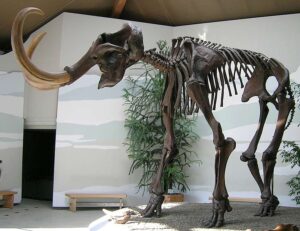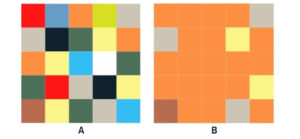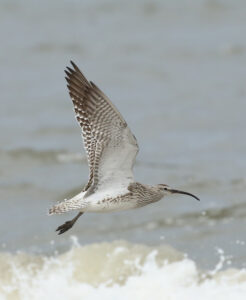A recent scientific paper published in eLife suggest that the loss of huge mammals at the end of the last Ice Age, grazers such as Giant Elks and Woolly Mammoths, would have had a significant impact on the landscapes on which they had lived and on birds like curlews, which thrived on the open ground.

The extent of suitable breeding areas for each of the nine curlew species was modelled for three periods: Last Glacial Maximum (22,000 years ago), mid-Holocene (6,000 years ago) and present day (1960-1990). These were compared with the effective population size (used as a proxy for genetic diversity).
Despite models predicting favourable climatic conditions, most species of curlew experienced a dramatic decline in population size in the lead up to the Holocene. To understand this puzzling trend, authors suggest that factors other than climate change need to be considered.
The elks and mammoths, as well as the large herds of horses and bison, were ecosystem engineers, meaning they grazed, browsed and physically impacted the vegetation and land and maintained the open tundra and grassland landscapes.
When they became extinct between 50,000 to 5,000 years ago, (the Late Quaternary Extinctions), what was once open started to cover over with trees and scrubland. This reduced the habitat available for nesting curlews, and ultimately resulted in reduced populations sizes and genetic diversity.
What is genetic diversity and why does it matter?
The term biodiversity refers to the variety of life found in an area; the mix of all of the different species found, but it also refers to the variety found within a single species.

A species with high genetic diversity is made up of individuals with lots of different genes, their collective gene pool would look more like figure A. A species with low genetic diversity is made up of a set of individuals with very similar sets of genes, their collective gene pool might look more like figure B.
For curlews, these genes may translate to physical features such as bill length or feather pattern, or they could contribute to behaviours such as egg laying date or social habits. Diversity within a species makes it more resilient to change, a shift in climate may mean that individuals with longer bills do better, if those genes have been lost, the whole population may decline, rather than just those with shorter bills.
The reduction in curlew genetic diversity when mammoths went extinct has had a lasting impact on the genome of today’s curlews, making them less diverse and less resistant to change.
By sequencing the DNA of ancient and fresh samples across all curlew species, the authors created the first phylogenomic tree for all nine species in the Numenius genus, including the Steppe Whimbrel, a rare subspecies (see below). Phylogenetic trees are branching diagrams showing the evolutionary relationships between species, the Numenius tree produced in this study tells us which species are more closely related and when they split into the species we see today.
This included using degraded DNA from toepads of museum specimens of the Slender-billed Curlew and the Eskimo Curlew, which are both listed on the IUCN Red List as Critically Endangered and are widely thought to be extinct by conservationists, having last been seen in 1995 and 1986 respectively.
How did this paper come about?
Interestingly, the inspiration for the paper can be traced back to the rediscovery of the Steppe Whimbrel (Numenius phaeopus alboaxillaris).

Although declared extinct in 1994, two birds were sighted and photographed amongst the nominate Whimbrel subspecies (N. p. phaeopus) in Maputo, Mozambique in 2016, by Gary Allport from Birdlife International.
Graham Appleton has an excellent post on this subspecies’ rediscovery and identification on his WaderTales blog.
DNA analysis of this rare subspecies was then undertaken by then-Masters student Hui Zhen Tan and Associate Professor Frank Rheindt from the Department of Biological Sciences at the National University of Singapore, which led to further DNA analysis of other curlews and whimbrels. Tan is the lead author on the newly published study, whilst Rheindt and Allport are amongst the co-authors.
